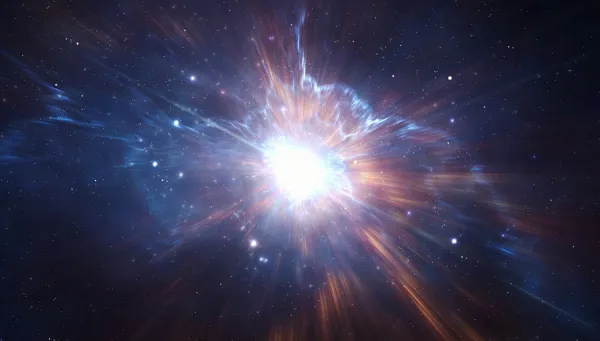14169,47%-0,89
42,71% 0,05
50,24% 0,08
5872,97% -0,60
9460,59% -0,83

The Big Bang Theory remains one of the most significant concepts in cosmology, offering a comprehensive explanation for the origin and evolution of the universe. This scientific model describes how the universe expanded from an extremely hot and dense state approximately 13.8 billion years ago, leading to the vast cosmos we observe today. Recent research continues to enhance our understanding of this monumental event, revealing fascinating insights into the very nature of existence.
The Big Bang Theory posits that the universe began as a singularity—a point of infinite density and temperature. From this singularity, space itself began to expand, leading to the formation of matter, energy, and the fundamental forces that govern our universe.
Singularity: The universe starts from an infinitely hot and dense point.
Inflation: A rapid expansion occurred within the first 10^-36 seconds, causing the universe to grow exponentially. This phase addresses the uniformity of the universe observed today.
Formation of Fundamental Particles: As the universe cooled, quarks, electrons, and other fundamental particles began to form within the first few minutes.
Nucleosynthesis: Within the first three minutes, protons and neutrons combined to create the lightest elements—primarily hydrogen, helium, and trace amounts of lithium.
Cosmic Microwave Background (CMB): About 380,000 years after the Big Bang, the universe cooled enough for electrons and protons to combine, forming neutral hydrogen. This led to the release of the CMB, a faint glow that fills the universe and provides a snapshot of its early state.
The Big Bang Theory is supported by several key pieces of evidence:
Hubble's Law: The observation that galaxies are moving away from us at speeds proportional to their distance, indicating an expanding universe.
Cosmic Microwave Background Radiation: The discovery of the CMB in 1965 by Arno Penzias and Robert Wilson provided a remnant signal from the early universe, consistent with predictions made by the Big Bang model.
Abundance of Light Elements: The predicted ratios of hydrogen, helium, and lithium are consistent with observations, supporting the theory of primordial nucleosynthesis.
The detection of gravitational waves has opened new avenues for studying the early universe. Researchers are investigating whether these ripples in space-time can provide clues about the conditions present during the Big Bang and the subsequent inflationary period.
The roles of dark matter and dark energy in the universe's evolution are areas of intense research. Understanding how these mysterious components fit into the Big Bang Theory may reshape our comprehension of cosmic dynamics.
Emerging theories in quantum cosmology are exploring the connections between quantum mechanics and the Big Bang. Researchers are investigating concepts like quantum fluctuations and their implications for the universe's origin.
The Big Bang Theory not only explains the origins of the universe but also lays the groundwork for our understanding of cosmic evolution. Ongoing research and technological advancements are poised to deepen our insights into this monumental event, potentially answering fundamental questions about the nature of reality, time, and space.
As scientists continue to explore the complexities of the universe, the Big Bang Theory remains the cornerstone of modern astrophysics, inviting us to consider the mysteries of our existence and the vast universe in which we live.

Veri politikasındaki amaçlarla sınırlı ve mevzuata uygun şekilde çerez konumlandırmaktayız. Detaylar için veri politikamızı inceleyebilirsiniz.